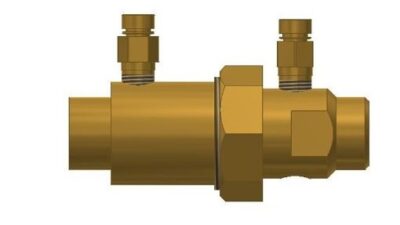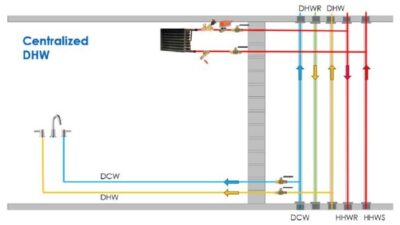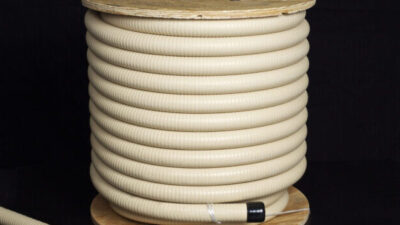San DiegoCounty’s Juvenile Hall, a complex of three buildings totaling 250,000 sq. ft., was having problems with a central chiller plant in the JuvenileProbationCenterBuilding. “They were having real problems with the existing chillers, both from the standpoint of efficiency and staying on the line,”explained Ben Erpelding with San Diego Regional Energy Office (SDREO), a non-profit organization that provides objective information, research, analysis and long-term planning on energy issues for the region.
The central plant had been constructed in 1998, using a primary-secondary design with a tertiary pump in each building. The chiller plant used two centrifugal chillers, a 450-ton constant-speed unit and a 350-ton variable-speed unit.
“They were supposed to be really efficient machines, but were not. Our office was tasked with evaluating the facility and improving performance,” said Erpelding.
SDREO performed an energy audit on the facility in 2003 and recommended reconfiguring it as an all-variable-speed system with VFDs on the second chiller as well as on condenser pumps. They suggested converting the entire campus to an all-variable-speed primary/booster chilled-water design to be controlled by demand-based controls. But when the conversion was completed, other problems appeared.
“For one, the chillers’ performance was terrible,” said Erpelding. “They were operating in the 0.77 to 1.3 kW per ton range with the VFDs.”
Tom Shaw from Alpha Mechanical reviewed the situation and recommended replacing the 300-ton existing chiller’s compressor with three 90-ton oil-free centrifugal machines. He and Erpelding convinced the county that this solution would improve plant efficiency dramatically, especially at part load.
The retrofit of the first unit was completed in 2004, and the facility immediately showed a dramatic improvement in efficiency. Following this upgrade, Shaw and SDREO recommended completing the project by installing three 120-ton compressors on the second 450-ton unit. Erpelding did the calculations on potential energy savings and projected chiller loads that showed the payback would be short. This final upgrade was completed in Oct. 2005. With this second machine, the operating savings have increased.
Erpelding and Shaw both feel that there are many chiller applications out there that would benefit from this type of conversion. As Erpelding pointed out, “These solutions save energy, eliminate oil problems and are very quiet. They are light in weight, use environmentally acceptable R-134a and the multiple compressors improve system redundancy. Another advantage is their low amps at startup.We think they are particularly attractive in applications with a lot of part-load hours.”
They also noted that the calculated payback from the plant improvement project is less than four years, with annual savings of $109,000. Although the new compressor outperforms the previous unit across the board, it’s at load levels less than 50% where the new units really shine.
Here, chiller performance ranges from 0.2 to 0.4 kW per ton, compared with rates of 0.6 kW per ton to as high as 1/8 kW ton at the lowest load levels for the older units. “This is important,” explained Erpelding, “because in so many installations the chillers are operating most of the year and most of the day at part-load, often levels of 20% to 40% of the design load.”
For more about oil-free Turbocor compressors from Danfoss, click here .



